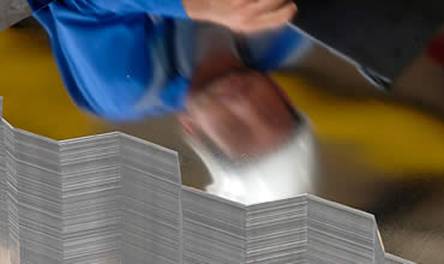Hot Rolling of Tinplate: Technical Process and Considerations
Hot rolling is a crucial process in the manufacture of tinplate, a material widely used in the metal packaging industry. This technical process involves several stages and specific considerations to ensure the quality of the final product. The technical aspects of hot rolling of tinplate are detailed below.
Hot Rolling Process Stages
Heating: Hot rolling starts with the heating of the steel slabs in furnaces. This heating is essential to achieve the necessary malleability in the steel, allowing its subsequent deformation. The heating temperature ranges from 1150 °C to 1250 °C, and strict control of the furnace temperature and atmosphere is crucial to ensure the surface quality of the finished product.
Roughing: In this phase, a preliminary reduction of the steel thickness is carried out. A roughing train is used, which can reduce the initial plate thickness by 25% to 50% per box. Rolling at this stage is carried out in the austenitic phase, where both roughing and finishing are performed at high temperature. However, this phase presents challenges in terms of productivity and material quality.
Finishing: The material then passes to the finishing mill, which consists of several boxes that further reduce the thickness of the steel. Subsequent reductions can vary between 25% and 30%, except in the last box, which makes a reduction of approximately 10%. The finishing temperature is approximately 800 °C to 900 °C, and is controlled by water quenching.
Cooling and Winding: After finishing, the material is cooled to temperatures of 500 °C to 700 °C and then wound. The objective of this stage is to obtain coils of determined dimensions, ready for the next manufacturing process.
Technical Considerations and Challenges
Energy Consumption: Hot rolling requires a large amount of energy. However, a rolling process has been developed that starts with roughing in the austenitic phase and finishing in the ferritic phase, which allows a reduction in energy consumption and a lower tendency to scale formation in the heating furnace.
Material Quality: Hot rolling in ferritic phase requires more mill power but has advantages in terms of quality, such as less scale formation and less wear of working rolls.
Ductility Problems: Insufficient ductility problems have been identified in hot rolled sheet, especially in electric arc furnace steels that use steel scrap as almost exclusive raw material. Residual contaminants present in the scrap can decrease the ductility of the material.
Conclusion
Hot rolling is a fundamental step in the production of tinplate, which requires precise control of process conditions to ensure product quality. Advances in rolling technology seek to improve the energy efficiency and quality of rolled steel, overcoming challenges associated with ductility and scale formation. The sheet metal resulting from this process is the basis for the manufacture of tinplate, which is then coated with a layer of tin for use in the metal packaging industry.














0 Comments